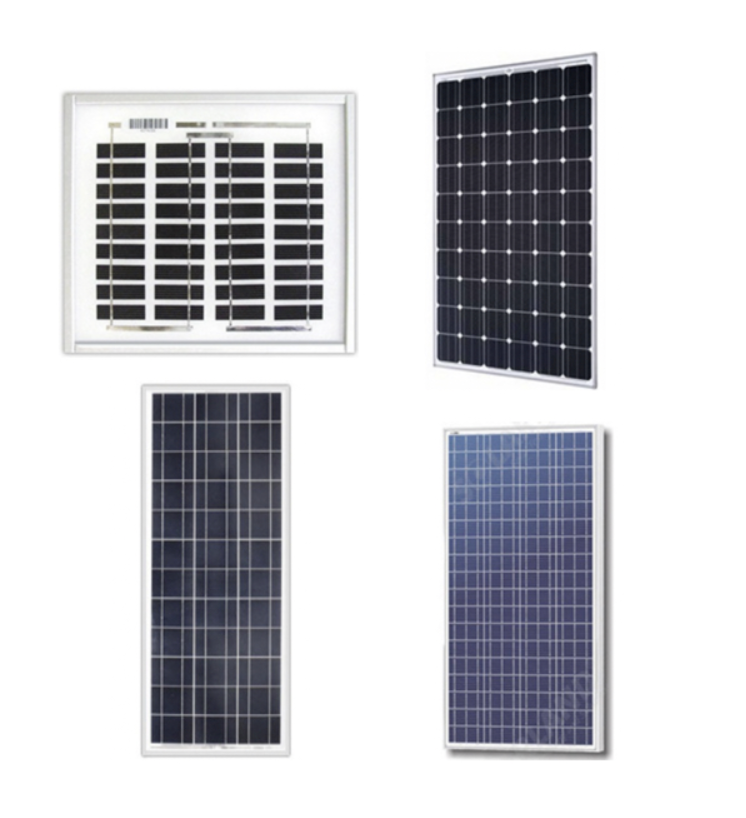Solar Panels

The basis of solar technology is the photovoltaic cell, which is a semiconductor device that converts sunlight into electricity—more specifically, direct current (DC) electricity. When sunlight hits a solar cell, it generates direct current, which can be utilized in three ways. You can use the electricity right away; you can store it in batteries so that you can use it whenever you want even if the sun's not shining; or you can convert the direct current into alternating current (AC) by using an inverter. The next big component of a solar energy system is the solar panel itself.
Not only does putting up a solar array allow you to make your own clean energy, but it also lets you help reduce the nation's dependence on fossil fuels and allow yourself or your community to become energy independent, cutting most kinds of wires to the electric grid and going off-grid for the most part. Solar panel systems come in various forms, and most of these forms can be used across on-grid, off-grid, or hybrid applications.
More Information about Solar Panels
Among portable solar panel systems for use in places that are off the electric grid, and among large-scale array systems for homes or businesses, there are also intelligent building-integrated photovoltaic systems that permit buildings to style themselves as they see fit, whether for historic reasons or to allow architects to do their jobs.
The solar energy production payoff goes beyond planetary perks, bringing a handful of solar power system benefits to homeowners' doorsteps. Most importantly, renewable energy promises to reduce our reliance on finite fossil fuels and even nuclear power. On a smaller scale, solar power might help reduce the cost of living at home with lower electricity bills. As the cost of solar paneling continues to drop, the number of people using this technology, either on their homes or businesses, appears to be rising. Whether powering vehicles, residences, or commercial properties, those rooftop panels seem increasingly vital to our sunny energy future.
FAQs
Do high quality solar panels produce electricity that can replace traditional energy sources?
Yes, high-quality solar panels can generate electricity efficiently enough to replace traditional energy sources, especially when combined with energy storage (for excess energy) and used in areas with sufficient sunlight.
What is the average solar panel capacity and what energy storage device is most commonly used to store excess solar energy?
The average solar panel capacity ranges from 250 to 400 watts per panel, and lithium-ion batteries are the most commonly used energy storage devices for storing excess solar energy.
Does the National Renewable Energy Laboratory install solar panels in a PV system?
The National Renewable Energy Laboratory (NREL) focuses on research and development of renewable energy technologies and does not offer solar panel installation services.
Solar Installation Tips and Tricks
Important things to consider when setting up a solar system:
Properly calculate energy needs
It is important to make sure not to underestimate how much power is being consumed by the system. This is especially important for any sites that are completely off grid, like a water tank that is monitoring various values at a given location. It is not uncommon to see these tanks located in areas that have no access to utility power. In these types of situations, it is critical to make sure that the total energy consumption has been calculated properly. So make sure to take time up front and properly calculate the amount of power that is required, and add a safety factor to the calculation in order to provide excess power in case things change in the future.
Battery backup
Battery power is essential when solar panels are not producing enough energy for critical operations. Solar panels only generate power when they are in direct sunlight. Night time, winter and times of inclement weather require an alternate source of power.
When in doubt, go big
It is always better to oversize when planning a solar system and determining power requirements.

